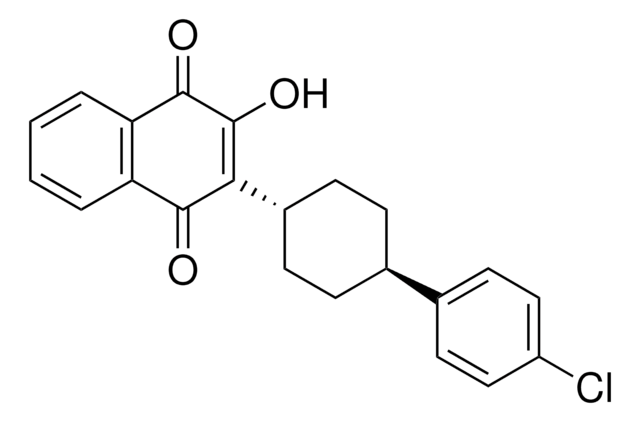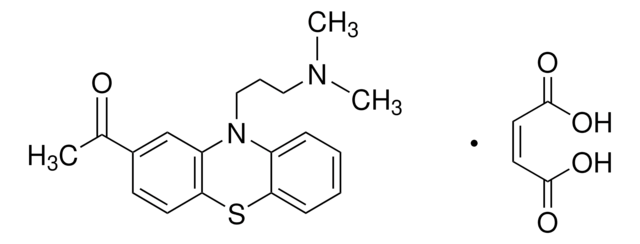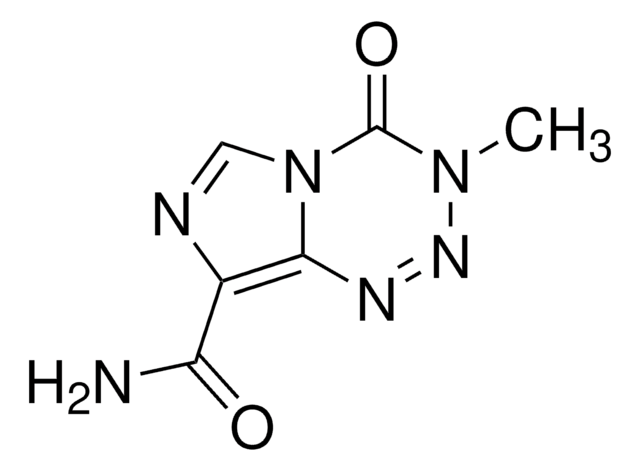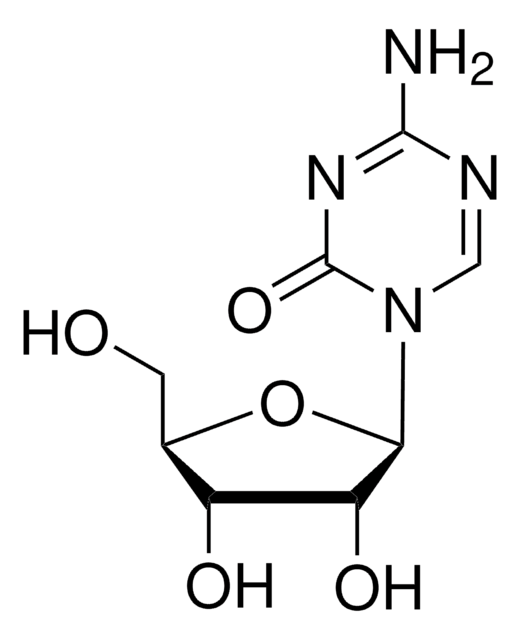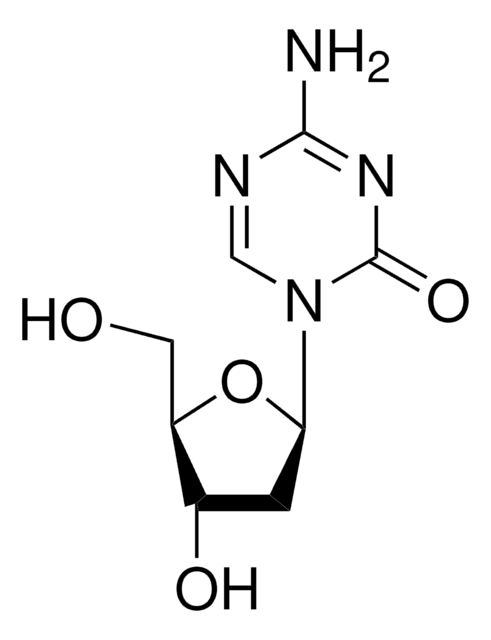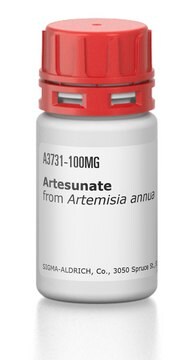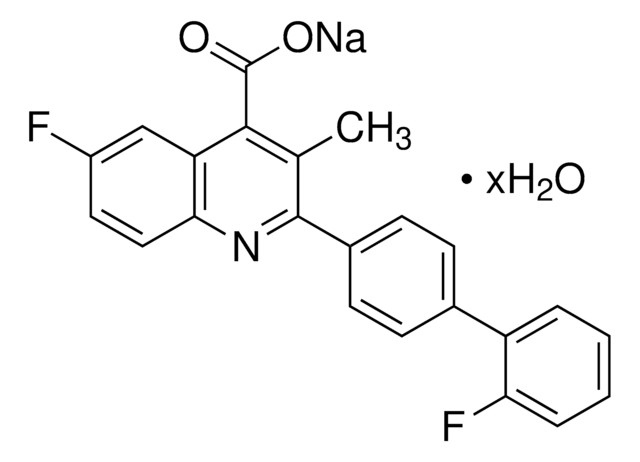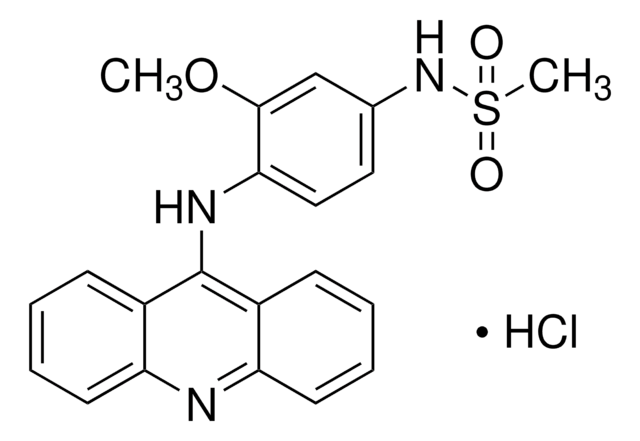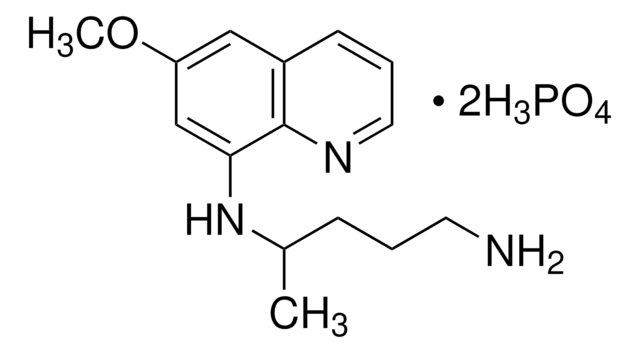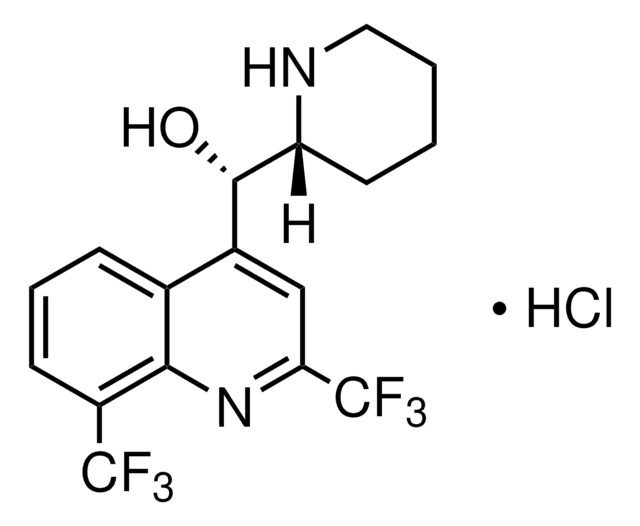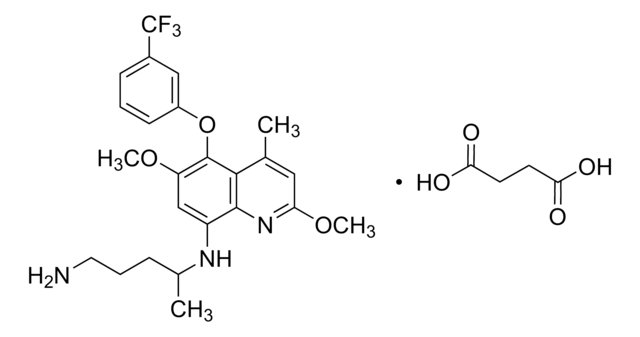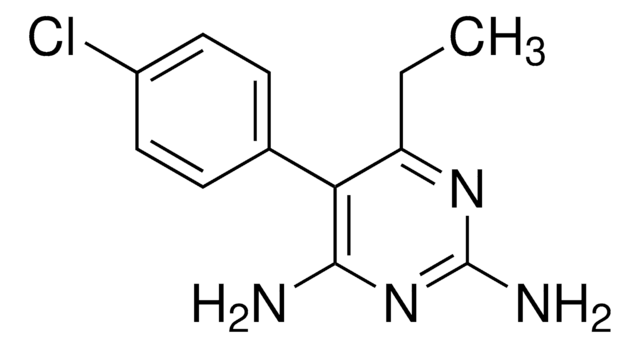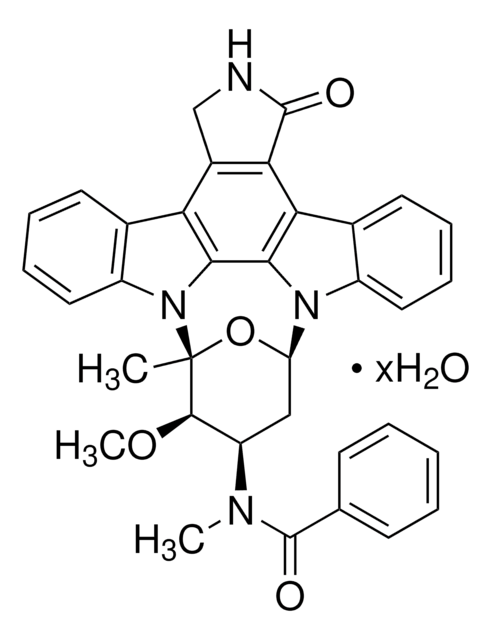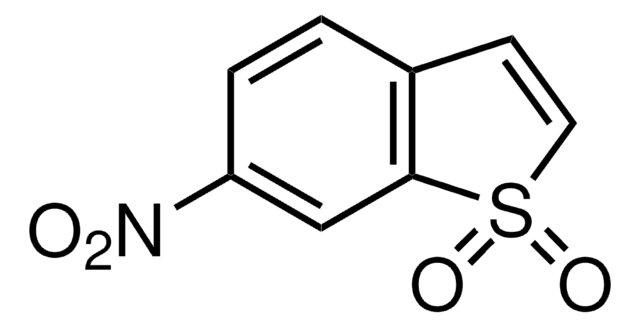おすすめの製品
製品名
アトバコン, ≥98% (HPLC)
品質水準
アッセイ
≥98% (HPLC)
フォーム
powder
色
yellow
溶解性
DMSO: >10 mg/mL
オーガナイザー
GlaxoSmithKline
保管温度
−20°C
SMILES記法
OC1=C([C@H]2CC[C@@H](CC2)c3ccc(Cl)cc3)C(=O)c4ccccc4C1=O
InChI
1S/C22H19ClO3/c23-16-11-9-14(10-12-16)13-5-7-15(8-6-13)19-20(24)17-3-1-2-4-18(17)21(25)22(19)26/h1-4,9-13,15,26H,5-8H2/t13-,15-
InChI Key
KUCQYCKVKVOKAY-CTYIDZIISA-N
類似した製品をお探しですか? 訪問 製品比較ガイド
アプリケーション
アトバコンは、ユビキノール酸化ポケット内のRieske鉄硫黄タンパク質およびシトクロムbとの相互作用を介して、シトクロムbc(1)複合体を阻害します。トキソプラズマ症の治療としての使用に加えて、アトバコンは抗マラリア特性を有し、腎移植後のニューモシスチス肺炎を予防します。
生物化学的/生理学的作用
アトバコンは、抗原虫性のミトコンドリア電子伝達阻害剤です。抗マラリア薬、抗ニューモシスチス薬であり、トキソプラズマ症の治療にも使用されています。原虫のミトコンドリアタンパク質ユビキノンのアナログであり、ユビキノールの酸化ポケットでシトクロムbとRieske型鉄-硫黄タンパク質との相互作用を介してシトクロムbc(1)複合体を阻害することにより作用します。
特徴および利点
この化合物はグラクソスミスクラインによって開発されました。他の医薬品開発化合物と認可された医薬品/医薬品候補のリストを閲覧するには、ここをクリックしてください。
保管分類コード
11 - Combustible Solids
WGK
WGK 3
引火点(°F)
Not applicable
引火点(℃)
Not applicable
適用法令
試験研究用途を考慮した関連法令を主に挙げております。化学物質以外については、一部の情報のみ提供しています。 製品を安全かつ合法的に使用することは、使用者の義務です。最新情報により修正される場合があります。WEBの反映には時間を要することがあるため、適宜SDSをご参照ください。
Jan Code
A7986-50MG:
A7986-VAR:
A7986-BULK:
A7986-10MG:
この製品を見ている人はこちらもチェック
Steven Gabardi et al.
Clinical transplantation, 26(3), E184-E190 (2012-04-11)
Pneumocystis pneumonia (PCP) is associated with significant morbidity and mortality in renal transplant recipients (RTR). Trimethoprim-sulfamethoxazole (TMP-SMZ) is considered the prophylactic agent-of-choice. Some patients require an alternative owing to TMP-SMZ intolerance. This is the first evaluation of full-dose atovaquone vs.
Zehua Song et al.
Antimicrobial agents and chemotherapy, 59(7), 4053-4058 (2015-04-29)
The bc1 complex is central to mitochondrial bioenergetics and the target of the antimalarial drug atovaquone that binds in the quinol oxidation (Qo) site of the complex. Structural analysis has shown that the Qo site residue Y279 (Y268 in Plasmodium
M Cella et al.
Clinical pharmacology and therapeutics, 91(4), 726-733 (2012-03-09)
Concurrent prescription of different drugs is common and is often necessary in many pediatric indications. A randomized concentration-controlled trial (RCCT) is proposed for pediatric studies in which drug combinations are used. The aim of our investigation was to show the
Mikio Kimura et al.
Parasitology international, 61(3), 466-469 (2012-04-10)
Malaria remains an important health risk among travelers to tropical/subtropical regions. However, in Japan, only 2 antimalarials are licensed for clinical use - oral quinine and mefloquine. The Research Group on Chemotherapy of Tropical Diseases introduced atovaquone-proguanil in 1999, and
Zehua Song et al.
Biochimica et biophysica acta, 1847(12), 1487-1494 (2015-08-25)
The respiratory chain bc1 complex is central to mitochondrial bioenergetics and the target of antiprotozoals. We characterized a modified yeast bc1 complex that more closely resemble Plasmodium falciparum enzyme. The mutant version was generated by replacing ten cytochrome b Qo
ライフサイエンス、有機合成、材料科学、クロマトグラフィー、分析など、あらゆる分野の研究に経験のあるメンバーがおります。.
製品に関するお問い合わせはこちら(テクニカルサービス)